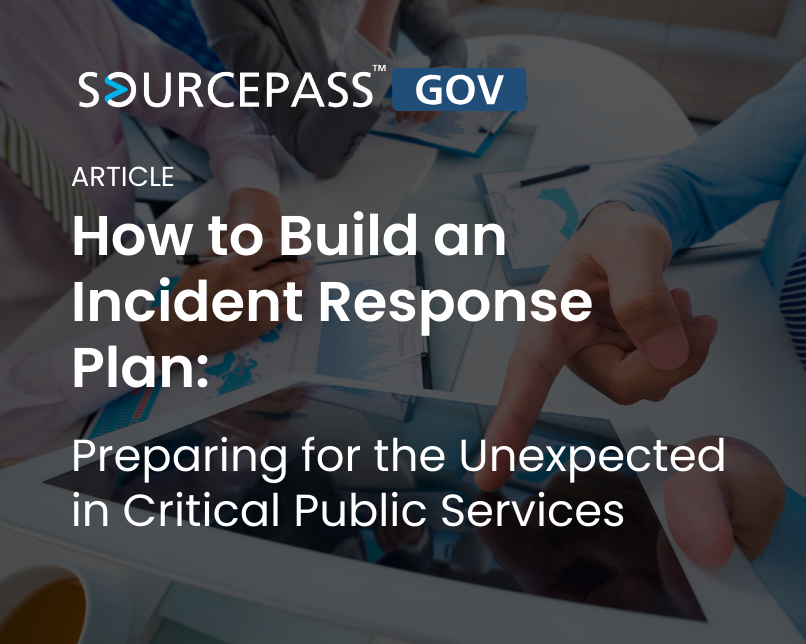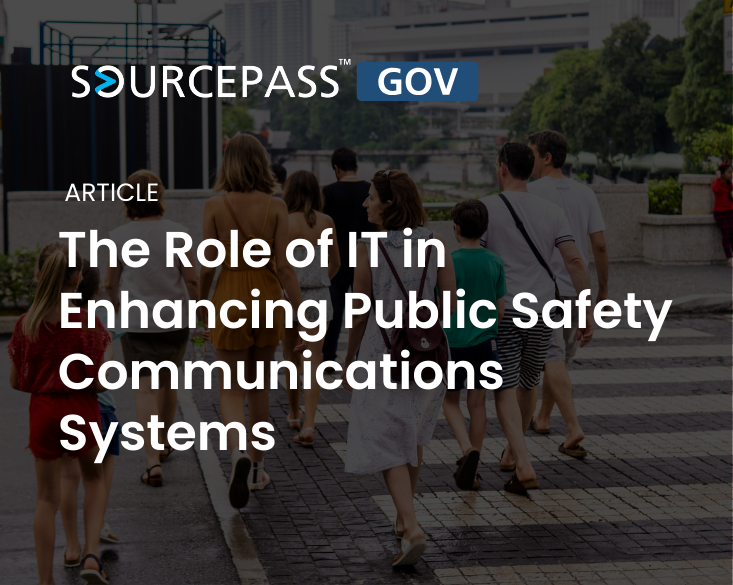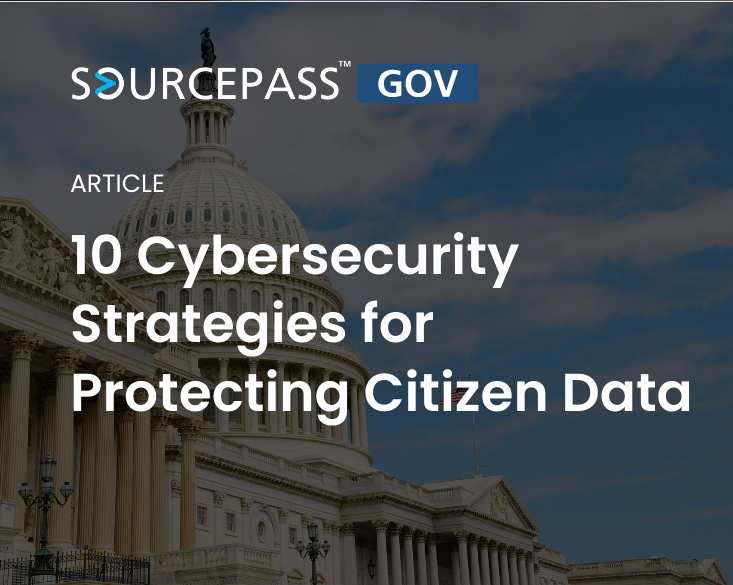11 min read
The Role of IT in Enhancing Public Safety Communications Systems
In today’s rapidly evolving technological landscape, public safety agencies rely on robust communication systems to protect communities and respond...
Our team offers a variety of services to support your IT operations and growth.
Leverage our expertise to optimize your IT environment and work towards compliance goals.
Our team is comprised of industry experts with a deep history in working with the public sector.
Please let us know how we may assist you.
4 min read
Kyra Mindlin : Jan 27, 2025 4:18:02 PM

In the evolving digital landscape of public service, local organizations are increasingly exposed to a variety of risks—from cyberattacks to ransomware to natural disasters.
Whether it's a security breach, a system outage, or an unexpected natural disaster, the ability to respond quickly and effectively can mean the difference between a minor setback and a full-blown, costly disaster.
As you likely know, public sector organizations, such as local and state government, first responders, and education, are responsible for delivering essential services that impact the lives of the general public every day.
Public service often involves the handling of sensitive data, coordination of critical activities, and even maintaining public safety. When a security breach or cyberattack happens, it not only disrupts the organization itself but also the people that org serves.
Operational failures and breaches can not only disrupt the lives of countless people, large-scale disruptions also undermine the trust of the public well beyond the time taken to implement a fix.
This is where incident response plans come in.
An Incident Response Plan (IRP), also known as a Disaster Recovery Plan, is designed to provide a structured approach to handling unexpected events, from virtual incidents to physical events like natural disasters, in a way that promotes a proactive response, minimizes damage and guides a swift recovery.
Without an Incident Response Plan, public sector organizations may struggle to respond effectively to an incident, leading to prolonged outages, compromised data, and a costly recovery.
In addition to the practical benefits of IRPs, public sector organizations are often required to have one in place for regulatory compliance. IRPs help to ensure you stay compliant even when the unexpected happens.
For instance, public services that handle sensitive citizen data must adhere to data protection regulations like GDPR or HIPAA, which mandate that these organizations have appropriate response plans in place for data breaches.
.png?width=2250&height=1250&name=Sourcepass_Pattern3%20(9).png)
To put it simply, an effective Incident Response Plan ensures your organization is ready to respond to a wide range of incidents in a coordinated and efficient manner.
While the specifics of each IRP will shift depending on the organization itself, there are several key components that every plan should include:
One of the first steps in an incident response is assigning accountabilities to team members for various parts of your Incident Response Plan.
A great IRP should define clear roles for each team member or specialist involved, from initial responders to decision-makers and technical teams. This cuts back on time and allows your team to spring into action right away during a crisis.
In a typical IRP, roles should include:
Not all incidents are the same. That's why it's important for your organization to have a system in place for identifying and classifying incidents.
If a team is able to quickly determine the severity of an event, organizations can move into the response phase right away, ensuring resources are allocated effectively and efficiently.
For example, a minor data leak might only require a localized response, while a full-scale cyberattack on public infrastructure could trigger a much larger, coordinated effort across various agencies.
To say communication is critical during a disaster incident is an understatement.
Not only do internal teams need to stay informed and aligned, but external stakeholders—public, partners, regulatory bodies—also need timely, well-communicated updates.
Your Incident Response Plan should include communication protocols that specify who receives updates, what information needs to be shared, and how often updates will go out. It’s important to remain transparent, timely, and accurate to maintain public trust and reduce misinformation.
Additionally, the plan should detail how public-facing communications (such as press releases or social media posts) will be handled to ensure that the public receives the right information at the right time.
Once the incident is identified, it's time for the remediation and recovery phase of your plan. For cybersecurity incidents, this may involve isolating compromised systems or shutting down parts of the network. This is called containment.
After containment, the next step is eradication—removing the threat entirely from the system. This action could involve running security scans, patching vulnerabilities, or cleaning up malicious files.
Finally, recovery is the process of restoring systems and services to normal operations. Depending on the nature of the incident, recovery may involve restoring data from backups, rebuilding systems, or implementing new security measures to prevent a recurrence.
.png?width=2250&height=1250&name=Sourcepass_Pattern3%20(5).png)
Although the threat is neutralized and systems are restored, the plan is still not yet finished! Following incident recovery, it's crucial for your organization to conduct a thorough post-incident analysis.
A post-incident analysis should generally contain the following:
Depending on the severity of the incident, organizations may be required to report to regulatory authorities, affected parties, and other stakeholders.
While Incident Response Plans are essential, preparation and continual education are key to ensuring that the plan is actually effective when needed.
Public sector organizations can take several steps to ensure they are ready for unexpected incidents:
Your staff is often the first line of defense for cyber threats. It's crucial to review the Incident Response Plan with your team, regularly train staff, and encourage ongoing education on emerging threats.
This means regularly conducting incident response drills to simulate real-world scenarios. These drills should involve all relevant teams and focus on testing the plan’s procedures, communication channels, and technical capabilities.
By practicing responses to various incidents—such as cyberattacks, natural disasters, or system outages—organizations can identify potential gaps in their plans and address them before a real emergency arises.
For sectors that serve the public, many incidents may require collaboration with external stakeholders, such as law enforcement, emergency responders, or other government agencies. It’s important to establish relationships and communication protocols with these partners alongside your internal plan.
By working with external experts, your organization can feel confident about the necessary support and resources needed during a crisis.
In many cases, technology failures can trigger incidents. Continuing to work on outdated systems and hardware leaves you open to security vulnerabilities and downtime.
It’s essential for public sector organizations to maintain secure, up-to-date systems and infrastructure to prevent incidents from occurring in the first place.
In the face of increasingly complex threats, having a strong incident response strategy isn't just a matter of efficiency; it’s a matter of public trust and safety.
By prioritizing preparedness and continuously refining response plans, public sector organizations can ensure they are ready for anything that comes their way.
Need some guidance for your Disaster Recovery Plan? Contact Sourcepass GOV today to speak to a security exert!

11 min read
In today’s rapidly evolving technological landscape, public safety agencies rely on robust communication systems to protect communities and respond...

6 min read
In November 2021, the Department of Defense (DoD) announced the transition from CMMC 1.0 to CMMC 2.0, streamlining the certification process and...

3 min read
The Cybersecurity Maturity Model Certification (CMMC) 1.0 was a groundbreaking initiative introduced by the U.S. Department of Defense (DoD) to...

In an era where data is a critical asset, safeguarding citizen information is paramount for public sector organizations.

In 2025, a resilient IT infrastructure is no longer optional for public sector services.
![[Webinar] An Incident Response and Disaster Recovery Panel](https://blog.sourcepassgov.com/hubfs/An%20Incident%20Response%20and%20Disaster%20Recovery%20Panel-2.png)
In this webinar, our expert panel of security specialists discuss all things incident response and disaster recovery.